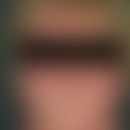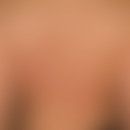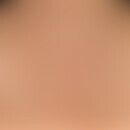Präparate
Salbengrundlage, abwaschbare (R213)
Tabellen
Zusammensetzung der wichtigsten Salbengrundlagen
|
Grundlage |
Wasser |
Alkohol |
Feststoff |
Fett |
Emulgator |
Gelbildner |
Feucht-haltemittel |
|
Hydrophobe Salben |
++++ |
||||||
|
Wasseraufnehmende Salben |
+ |
++++ |
W/O-Emulgator |
||||
|
Hydrophile Salben |
++++ |
||||||
|
Hydrophobe Cremes |
++ |
++ |
W/O-Emulgator |
||||
|
Ambiphile Cremes |
++ |
++ |
W/O-Emulgator, O/W-Emulgator |
||||
|
Hydrophile Cremes |
++ |
++ |
O/W-Emulgator, W/O-Stabilisator |
+ |
|||
|
Lotionen |
+++ |
+ |
O/W-Emulgator, W/O-Stabilisator |
+ |
|||
|
Hydrophile Gele |
++++ |
+ |
+ |
||||
|
Wässrige Lösungen |
++++ |
||||||
|
Alkoholische Lösungen |
++++ |
||||||
|
Schüttelmixturen |
++ |
(+) |
++ |
(+) |
+ |
||
|
Pasten |
++ |
++ |
|||||
|
Weiche Pasten |
+ |
+++ |
|||||
|
Puder |
++++ |
Physikalische Eigenschaften der wichtigsten Salbengrundlagen
|
Grundlage |
Mischbar mit Wasser |
Mischbar mit Fett |
Abwaschbarkeit |
|
Hydrophobe Salben |
(+) |
+ |
|
|
Wasseraufnehmende Salben |
+ |
+ |
|
|
Hydrophile Salben |
+ |
+ |
+ |
|
Hydophobe Cremes |
+ |
+ |
|
|
Ambiphile Cremes |
+ |
+ |
+ |
|
Hydrophile Cremes |
(+) |
+ |
+ |
|
Lotionen |
+ |
(+) |
+ |
|
Hydrophile Gele |
+ |
+ |
|
|
Wässrige Lösungen |
+ |
+ |
|
|
Alkoholische Lösungen |
+ |
+ |
+ |
|
Schüttelmixturen |
+ |
+ |
|
|
Pasten |
+ |
wenn emulgatorhaltig |
|
|
Puder |
+ |
+ |
(+) |
|
|
Salbengrundlage |
Beispiele |
|
Nichtionischer Typ |
Kohlenwasserstoff-Gele |
Vaseline, weiß Ph. Eur. 4.05 |
|
Vaseline, gelb Ph. Eur. 4.00 |
||
|
Hydrophobes Basisgel DAB |
||
|
|
||
|
W/O-Absorptionssalben |
Wollwachsalkohol-Salbe DAB 2003 |
|
|
Ungt. sorbitansesquioleati |
||
|
Emulgierende Augensalbe (NRF 15.20.) |
||
|
|
||
|
W/O-Cremes |
Wasserhaltige Wollwachsalkohol-Salbe DAB 2003 |
|
|
Hydrophobe Basiscreme DAC (NRF 11.104.) |
||
|
Cremor sorbitansesquioleati |
||
|
Cremor Vaselini MB 59 |
||
|
|
||
|
Anionischer Typ |
O/W-Absorptionssalbe |
Hydrophile Salbe DAB 2003 (Ungt. emulsific.) |
|
|
||
|
O/W-Cremes |
Wasserhaltige hydrophile Salbe DAB 2003 (Ungt. emulsif. aq.) |
|
|
Anionische hydrophile Creme SR (NRF S.27.) |
||
|
Wasserhaltiges Liniment SR (NRF 11.93.) |
||
|
|
||
|
Hydro-Gele |
Carmellose-Natrium-Gel DAB 2003 |
|
|
Wasserhaltiges Carbomer-Gel DAB 2003 |
||
|
2-Propanol Carbomer-Gel DAB 2003 |
||
|
|
||
|
Nichtionischer Typ
|
Ambiphile Creme |
Basiscreme DAC |
|
|
||
|
O/W-Absorptionssalben |
Ungt. Cordes |
|
|
|
||
|
O/W-Cremes |
Nichtionische hydrophile Creme DAB 2003 |
|
|
Nichtionische hydrophile Creme SR (NRF S.27.) |
||
|
Nichtionische wasserhaltiges Liniment (NRF 11.92.) |
||
|
|
||
|
O/W-Lotion |
Hydrophile Hautemulsionsgrundlage (NRF S.25.) |
|
|
|
||
|
Hydro-Gel |
Hydroxyethylcellulose-Gel DAB 2003 |
|
|
Grundlagentyp nach chemischem Verhalten gegenüber Wasser und Fetten |
Alternative Bezeichnung für Grundlagentyp |
Beispiele |
Fettgehalt [%] |
Wassergehalt [%] |
|
Hydrophobe Salben |
Kohlenwasserstoff-Gele |
Vaseline, weiß Ph. Eur 4.05 |
100 |
0 |
|
Vaseline, gelb Ph. Eur. 4.00 |
100 |
0 |
||
|
Einfache Augensalbe DAC |
100 |
0 |
||
|
|
||||
|
Hydrophile Salben |
PEG-Salben |
Macrogol-Salbe DAC |
0 |
0 |
|
|
||||
|
Hydrophobe Gele |
Polyethylen-Oleo-Gel |
Hydrophobes Basisgel DAC |
95 |
0 |
|
|
||||
|
Wasseraufnehmende Salben |
W/O-Absorptionssalben |
Wollwachsalkoholsalbe DAB (= Eucerin. anhydric.) |
93,5 |
0 |
|
Ungt. sorbitansesquioleati |
90 |
|||
|
Emulgierende Augensalbe (NRF 15.20.) |
99,0 |
0 |
||
|
|
||||
|
|
O/W-Absorptionssalben |
Hydrophile Salbe DAB (Ungt. emulsificans) |
70 |
0 |
|
Ungt. Cordes |
nicht bekannt |
0 |
||
|
|
||||
|
Hydrophobe Cremes |
W/O-Cremes |
Weiche Salbe (Ungt. molle) DAC 2001 |
57,5 |
10 |
|
Lanolin DAB |
80 |
20 |
||
|
Wasserhaltige Wollwachsalkoholsalbe DAB (= Eucerin cum aqua) |
46,75 |
50 |
||
|
Wasserhaltige Wollwachsalkoholsalbe pH5 (NRF 11.32.) |
42,4 |
54,2 |
||
|
Hydrophobe Basiscreme DAC (NRF 11.104.) |
27 |
64,3 |
||
|
Quasi-W/O-Cremes |
Kühlsalbe (Ungt. leniens) DAB |
60 |
25 |
|
|
|
||||
|
Ambiphile Cremes |
|
Basiscreme DAC |
33 |
40 |
|
|
||||
|
Hydrophile Cremes |
O/W-Cremes |
Wasserhaltige hydrophile Salbe DAB (Ungt. emulsif. aq.) |
21 |
70 |
|
Nichtionische hydrophile Creme DAB |
25 |
50 |
||
|
Nichtionische hydrophile Creme SR (NRF S.26.) |
10 |
63,8 |
||
|
Nichtionisches wasserhaltiges Liniment (NRF 11.92.) |
5 |
81,8 |
||
|
Anionische hydrophile Creme SR (NRF S.27.) |
10 |
63,8 |
||
|
Wasserhaltiges Liniment SR (NRF 11.93.) |
5 |
81,8 |
||
|
|
||||
|
Hydrophile Lotionen |
O/W-Lotionen |
Hydrophile Hautemulsionsgrundlage (NRF S.25.) |
5 |
85 |
|
Cetomacrogol-Lotion FN |
6 |
88 |
||
|
Basis Cordes RK/Wasser-Lotio [20/80] |
20 |
80 |
||
|
|
||||
|
Hydrophile Gele |
Hydro-Gele |
Hydroxyethylcellulose-Gel DAB |
0 |
87,5 |
|
Carmellose-Natrium-Gel DAB |
0 |
85 |
||
|
Wasserhaltiges Carbomer-Gel DAB |
0 |
96,5 |
||
|
2-Propanolhaltiges Carbomer-Gel DAB |
0 |
73,5 |
||
|
|
||||
|
Hydrophile Pasten |
|
Wässrige Zinkoxidpaste FH Z.3 |
||
|
Hydrophile Zinkoxid-Paste 40% mit Ammoniumbituminosulfonat 5% (NRF 11.108.) |
2,0 |
52,3 |
||
|
|
||||
|
Lipophile Pasten, harte |
|
Zinkpaste DAB |
50 |
0 |
|
Lipophile Pasten, weiche |
|
Weiche Zinkpaste DAB |
60 |
0 |
|
Lipophile Pasten, flüssige |
|
Zink-Öl (NRF 11.20.) |
50 |
0 |
|
Grundlage/Externum |
Beispiele |
Erkrankungsstadium |
|
|
Puder |
|
|
akut |
|
|
|||
|
Schüttelmixtur |
nicht stabilisiert |
Lotio alba aquosa DAC oder hautfarben (NRF 11.22.) |
akut |
|
Lotio alba spirituosa (NRF 11.3.) |
|||
|
stabilisiert |
Emulsionszinkoxid-Schüttelmixtur (NRF 11.49.) |
akut |
|
|
Wässrige Zinkoxidpaste FH Z.3 |
|||
|
|
|||
|
Hydrophile Paste (3-Phasen-Paste) |
|
Hydrophile Zinkoxidpaste 40% mit Ammoniumbituminosulfonat 5% (NRF 11.108.) |
akut |
|
|
|||
|
Lösung |
wässrig (evtl. mit Gelbildner) oder alkoholisch (evtl. mit Gelbildner) |
|
akut |
|
|
|||
|
Hydrogel |
nichtionisch |
Hydroxyethylcellulose-Gel DAB |
akut |
|
anionisch |
Carmellose-Natrium-Gel DAB |
||
|
Wasserhaltiges Carbomer-Gel DAB |
|||
|
2-Propanolhaltiges Carbomer-Gel DAB |
|||
|
|
|||
|
O/W-Milch |
nichtionisch |
Hydrophile Hautemulsionsgrundlage (NRF S.25.) |
subakut |
|
Cetomacrogol-Lotio FN |
|||
|
|
anionisch |
Tegin-Lotio (eigene Vorschrift) |
|
|
|
|||
|
O/W-Creme |
anionisch |
Ungt. emulsif. aq. DAB |
subakut |
|
Anionische hydrophile Creme SR (NRF S.27.) |
|||
|
Wasserhaltiges Liniment SR (NRF 11.93.) |
|||
|
nichtionisch |
Nichtionische hydrophile Creme DAB |
||
|
Nichtionische hydrophile Creme SR (NRF S.26.) |
|||
|
Nichtionisches wasserhaltiges Liniment (NRF 11.92.) |
|||
|
|
|||
|
Ambiphile Creme |
|
Basiscreme DAC |
subakut |
|
|
|||
|
Quasi-W/O-Creme |
|
Kühlsalbe DAB |
subakut |
|
|
|||
|
O/W-Absorptionssalbe |
anionisch |
Ungt. emulsif. DAB |
subakut |
|
nichtionisch |
Ungt. Cordes |
||
|
|
|||
|
W/O-Creme |
mit Wollwachs |
Ungt. alcohol. lanae aquos. DAB |
chronisch |
|
Eucerin cum aqua |
|||
|
Lanolin DAB |
|||
|
ohne Wollwachs |
Hydrophobe Basiscreme DAC (NRF 11.104.) |
||
|
Cremor sorbitansesquioleati |
|||
|
Cremor vaselini MB 59 |
|||
|
|
|||
|
W/O-Absorptionssalbe |
mit Wollwachs |
Ungt. alcohol. lanae DAB |
chronisch |
|
ohne Wollwachs |
Ungt. sorbitansesquioleati |
||
|
Emulgierende Augensalbe (NRF 15.20.) |
|||
|
|
|||
|
Lipophile Paste |
hart |
Zinkpaste DAB (2-Phasenpaste) |
chronisch |
|
Zinkoxid-Stärke-Absorptionssalbe ZL (2-Phasen-Paste) |
|||
|
weich |
weiche Zinkoxid-Paste DAB (2-Phasenpaste) |
||
|
flüssig |
Oleum Zinci (NRF 11.20.) |
||
|
|
|||
|
Kohlenwasserstoff- und Lipo-Gele |
Weißes Vaselin Ph. Eur. 4.05 |
chronisch |
|
|
Einfache Augensalbe DAC |
|||
|
Hydrophobes Basis-Gel DAC (Oleo-Gel) |
|||
|
|
Schweineschmalz DAB (Lipogel) |
||
|
Name |
Verwendung in Salbengrundlagen |
|
Bentonit Ph. Eur. 4.00 |
in einigen Gelen und Schüttelmixturen als Hydrogelbildner verwendbar |
|
in einigen W/O-emulsionen als Oleogelbildner verwendbar |
|
|
Natriumalginat Ph. Eur. 4.00 |
in einigen Gelen als Hydrogel-Bildner verwendbar |
|
Natriumcarboxymethylcellulose (= Carmellose-Natrium Ph. Eur. 4.00) |
in vielen Gelen als Hydrogel-Bildner verwendbar |
|
Natriumcetylstearylsulfat Ph. Eur. 4.00 |
als emulgierender Cetylstearylalkoghol (Typ A) Ph. Eur. 4.00 verwendbar (z.B. in Lanette N) |
|
Natriumdodecylsulfat bzw. Natriumlaurylsulfat Ph. Eur. 4.00 |
als emulgierender Cetylstearylalkohol (Typ B) Ph. Eur. 4.00 verwendbar |
|
Kalium- oder Natriumstearat Ph. Helvet. |
als "selbstemulgierendes Glycerinmonostearat" verwendbar (= O/W-Komplexemulgator) (z.B. Tegin) |
|
Polyacrylate (= Carbomere Ph. Eur. 4.00) |
in vielen Gelen und O/W-Emulsionen als Hydrogelbildner verwendbar |
|
Triethanolaminstearat |
in Stearat-Cremes/Lotionen als O/W-Emulgator verwendbar |



